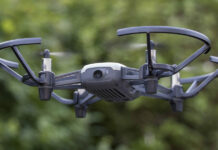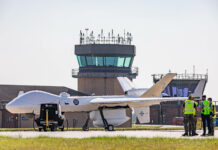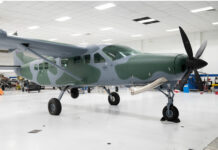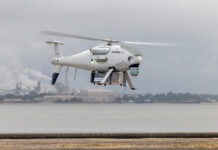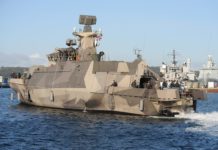The rapidly expanding portfolio of Unmanned Surface Vehicles (USV) brings innovative warfighting capabilities to maritime operations. Unmanned systems have started to play an important role in the modern naval battlefield.
The growing interest lies in the fact that USVs are well suited to carry out a wide range of missions (such as mine countermeasures (MCM), anti-submarine warfare (ASW) and intelligence, surveillance and reconnaissance (ISR)), are able to be deployed from a variety of host platforms, can be manufactured at much lower costs and be operated without onboard human operators.
Within Southeast Asia, the Republic of Singapore Navy (RSN) was the first to deploy USVs during real operations, for example the 9 metre Rafael PROTECTOR USV embarked on-board the ENDURANCE class landing platform dock RSS RESOLUTION. During RSS RESOLUTION’s three-month deployment to the Northern Arabian Gulf in 2004/2005, the PROTECTORs were used to assist in protecting critical infrastructures, such as the Basrah Oil Terminal, from terrorist attacks. Line-of-sight communications and control was exercised from aboard RSS RESOLUTION. Their mission payload comprised a TOPLITE electro-optical director for surveillance and weapon control, a Mini-Typhoon stabilised weapon station, a searchlight, a Long Range Acoustic Device (LRAD) and a microphone. The RSN still operates an undisclosed number of 9 metre Rafael PROTECTOR USVs, a rigid hull inflatable USV.
In a document titled “Building the Next Generation Singapore Armed Forces”, published in March 2019, the Singapore Ministry of Defence outlines the future of the nation’s forces for 2030 and beyond, by means of a progressive increase on unmanned vehicles in all domains.
The Republic of Singapore Navy (RSN) upcoming fleet renovation will focus on the integration of unmanned surface vessels and the latest developments in robotics, artificial intelligence and data analytics. The navy is arguably further advanced in the area of experimental USVs for future naval combat. This is not only the result of anticipating the navy’s future operational needs but also in view of Singapore’s manning constraints (the low total fertility rate continues to affect the Republic of Singapore’s Armed forces in general) and the desire to reduce the vulnerability of its personnel.
The VENUS Family
The RSN is experimenting with different USV types for various tasks, such as the VENUS family, developed by the Marine Division of the Singapore Technologies Engineering company (ST Engineering). The VENUS USV is an indigenous effort believed to have grown out of Singapore’s previous involvement in the US Navy’s Spartan Scout Advanced Concept Technology Demonstration (ACTD) programme. The VENUS series ranges from the 5.5 tonne VENUS 9 with a payload capacity of 2.5 tonnes over the 11 tonne VENUS 11 with a payload of 4.5 tonnes, to the 26 tonne VENUS 16 with a 10 tonnes payload capacity. These craft can operate autonomously with multi-modal collision detection and collision avoidance (CDCA) software, using radar tracker and vision-based obstacle/target detection, multi-sensor fusion and navigation chart processing and capable to perform autonomous waypoint navigation, screening and blocking, while the modular approach facilitates the integration of a wide range of mission modules. Seen as a critical issue for the still embryonic future surface combatant programme – the Multi-Role Combat Vessels (MRCV) – the RSN is in the midst of testing several variants of the VENUS 16 USVs.
In May of this year, ST Engineering Marine Division unveiled the latest iteration of its VANGUARD series of modular surface vessels – the VANGUARD 130 – at the IMDEX ASIA 2019 Maritime Exhibition in Singapore. The VANGUARD 130 design combines a full-fledged surface combatant with a mother-ship capable to deploy and recover a wide array of unmanned systems such as UAV, USV and UUV. Flushed doors on its port and starboards sides support launch and recovery of remotely operated vehicles (ROVs) and autonomous underwater vehicles (AUVs). The platform can be equipped with an ST Engineering in-house designed launch-and-recovery system (LARS) for handling a wide range of small crafts and unmanned surface vehicles such as RHIBs and USVs, known as the Q-LARS 2.0.
The Anti-Mine VENUS
The VENUS 16 Mine Countermeasure concept, where one VENUS 16 is fitted with a Towed Synthetic Aperture Sonar (TSAS) to conduct underwater scans to detect and classify mines, while another VENUS 16 embarks the ECA K-STER Expendable Mine Disposal Systems (EMDS) to carry out the mine detection and neutralisation to conduct mine disposals. Both versions feature autonomous collision avoidance and Satcom systems to cancel any blind spots caused by geographical and shipping reasons. This waterjet-propelled USV can attain speeds in excess of 30 kn and has an endurance of up to 36 hours. The craft is controlled by a 2-person crew in a 20 ft TEU container that can be located either ashore or deployed from a ship. This concept will eventually replace the navy’s ageing BEDOK class mine countermeasure vessels (MCMVs).
The Coastal Defence Venus
Another type undergoing trials is the VENUS 16 coastal defence variant, specifically configured for maritime security and force protection operations. The USV can navigate by waypoint navigation and maintain its position relative to other vessels and operate autonomously in proximity with other vessels thanks to the in-built Collision Detection and Collision Avoidance system (CDCA). A series of tests in the Singapore Strait, the busiest shipping lane in the world, began late 2015 and are anticipated to be completed by the end of 2019. The RSN is expected to effectively commence patrols around Singapore with these USVs from 2020 onwards. Eventually, these USVs will take over the patrols that are currently undertaken by the navy’s VICTORY class patrol boats and the Independence class Littoral Mission Vessels (LMVs), thus freeing up these units to be deployed at further ranges and for more complex missions.
The Anti-Submarine VENUS
The RSN and the ST Engineering’s Marine Division are also testing an anti-submarine warfare (ASW) variant of the VENUS 16 fitted with a launch and recovery system for dipping sonars, a hull-mounted sonar system performing active and passive search and tracking incoming torpedoes warning and small object avoidance system. This type of USV could be deployed in high-risk shallow water zones and prosecute targets such as UUVs that are using small, super-cavitating weapons or lightweight torpedoes before those targets have a chance to threaten the larger surface combatants.
Surveillance USVs
In the coming years one will see the USVs being used in in a very pronounced role carrying out intelligence, surveillance and reconnaissance (ISR) tasks. These craft should feature extensive communications capabilities, using recoverable tethered optical fibre buoy-type acoustic communications (ACOM) and satellite communications (SATCOM), have the capability to operate at long stand-off distances and be able to remain on station for extended periods. Such USVs would be especially suited for ISR missions in constrained waters. The transit to their area of operations would be conducted in a passive mode in order to gather intelligence on the signatures of passing vessels or to provide target-acquisition data. ST Engineering’s Marine Division is responding to this future need by offering its SUPER SWIFT Interceptor USVs. Designed for a variety of missions, including pursuit and arrest, search and rescue, offshore and border patrols, escorting other vessels and (covert) surveillance operations, the company already offers three versions: the SUPER SWIFT 17 Ultra Fast Interceptor / Patrol Craft; the SUPER SWIFT Special Operations Craft / Coastal Security Craft and the SUPER SWIFT 35 Ultra Fast Patrol Vessel. These craft feature the advanced Air Cavity Hull (ACH) designs, are capable to achieve high speeds without compromising stability, manoeuvrability and seakeeping.
The interceptors, either equipped with a waterjet propulsion, or surface-piercing propellers allowing speeds in excess of 60 knots, can be equipped with small calibre guns, remotely controlled weapon stations (RWS) and explosive ordnance disposal (EOD) systems.
The VIGILANT
Another likely contender for the RSN’s unmanned surface vehicles procurement programme is the Singapore-based Zycraft’s 16.6m VIGILANT Independent Unmanned Surface Vessel (IUSV).
This USV has a resin hull, reinforced with carbon nanotubes, and is equipped with a SEAKEEPER stabilisation system enabling the IUSV to operate in high sea states, even during monsoon seasons. A SIMRAD 4G radar and collision avoidance software ensures safe operations in congested waters. The two YANMAR 6LY3-ETP engines allow the VIGILANT IUSV to attain a top speed in excess of 30 kn, achieve at least 3,000 nautical miles or a 25-day of endurance at a 6 kn loiter speed. The IUSV can carry fuel and mission payload of up to 7,000 kg. In a surveillance role they are fitted with a radar, an automated identification system (AIS) and high-definition cameras featuring smart sensors for automated surveillance and transmit the images in real time. This type of USV was originally designed to escort merchant ships as they made their way through waters known for piracy and sea robbery activities.
Zycraft recently completed an unmanned deployment of a VIGILANT IUSV for 22 continuous days during with the vessel, sailing at 5 knots, travelled some 1900 nm and command and control done via satellite communications. The IUSV was run on auto-pilot mode and carried out autonomous vessel and obstacle avoidance using its proprietary software and information from its on-board cameras.
Challenges
While today’s USV concepts represent an impressive vision, there is still a significant amount of work to be done. Although tremendous efforts have been dedicated to make USVs more autonomous, there remain numerous key technical issues to be solved in order to bring the autonomy up to the level required for more sophisticated and hazardous applications, such as communications robustness, continuous bandwidth availability and sufficient power for propulsion and to operate them at very long ranges, but also have sufficient power to make a sustained and full use of the ‘power-hungry’ organic sensors and communications systems.
The pursuit of next-generation defence innovations presents a range of complex challenges for Singapore’s defence planners, from identifying and prioritising emerging technologies, to adapting them to new force structures using novel operational concepts. One must see how the USVs can be fully integrated with the manned units, their impact on concepts of operations (CONOPS) and procedures, their implications for operational doctrines and on the rules of engagement (RoE), the effect on education and training, as well as on how autonomous robots and humans will be able to interact more closely on the battlefield. One cannot ever talk about autonomous and unmanned systems without bringing up the cyber vulnerabilities; there must also be a strong focus on defending the unmanned surface vehicles from cyber-attacks. The inherent vulnerabilities are the linkages.
Ultimately, the strategic logic and goal remain unchanged: to create viable defence options and political effects. In this context, the key lesson from past military innovations is this: breakthroughs in technology alone will not guarantee successful innovation.
Obviously the utilisation of USVs will continue to increase and show that craft with much higher autonomy levels will allow to operate at a much longer time without the intervention of human operators. The most important trend is the intelligence levels of the USVs. With the advent of the AI, previously impossible task such as recognising enemy vessels through the camera images can be automated.
Future Concepts
A number of companies are also looking into the integration of large- and medium-sized USVs. Again, the marine division of ST Engineering is anticipating this trend by offering its conceptual 45 metres Long Endurance Unmanned Surface Vessel (LEUSV), designed to perform anti-submarine warfare, maritime patrol and surveillance tasks. The hull-form enables good sea-keeping even during the monsoon seasons, while their hybrid combined diesel and electrical propulsion system allows long range operations at loitering speeds. Other trends that are being looking into are to convert manned vessels into unmanned platforms, and for ‘optionally manned’ USVs. With the increased interest in reducing ships’ crews, there is potential for ‘retrofitting’ smaller vessels and turn them into fully autonomous or into a ‘mix and match’ approach where certain elements of the ship can be controlled autonomously.
Guy Toremans is a freelance naval journalist based in Belgium.



